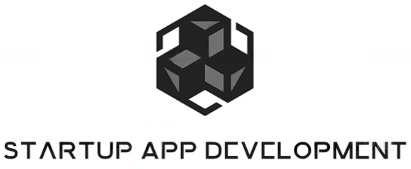Starting a new business is an exciting journey filled with possibilities. However, to turn those possibilities into realities, startups must navigate a series of critical steps. One of the most vital steps is initial testing. In this blog, we’ll explore why initial testing is crucial for startups and how it can set the foundation for success.
Understanding the Importance of Initial Testing
Initial testing allows startups to validate their business ideas, reducing risks and enhancing the chances of success. It helps in identifying potential issues early, saving time and money. By conducting initial tests, startups can confront real-world challenges in a controlled environment, which leads to more informed decision-making and a higher likelihood of product-market fit.
Beyond just a validation tool, initial testing serves as a litmus test for gauging market interest. It’s an opportunity to get a firsthand understanding of user interaction and satisfaction with your product, enabling a proactive approach to problem-solving. The feedback gathered during this stage is invaluable for refining product features and guiding the strategic direction of the business.
Engaging in initial testing also instills a culture of iterative learning and adaptation, crucial traits for any startup navigating the volatile market landscape. According to Startup App Development, businesses that embrace early testing are better positioned to leverage their findings for innovation and trend adaptation. This alignment not only ensures relevancy but also fosters resilience in the face of inevitable changes.
Validating the Product or Service
Testing helps determine if there is a need for the product or service and if it fulfills customer needs. Receiving feedback from initial users can guide improvements. Often, a product idea might seem flawless in theory, but the real test of its viability comes from actual users interacting with it. These real-world insights are instrumental in fine-tuning your offering to better meet market demands.
Feedback isn’t just about pointing out flaws—it’s a gateway to discovering hidden potential or unthought-of features that could elevate your offering. In initial testing, startups should focus on collecting as much qualitative and quantitative data as possible. This data offers a comprehensive picture of areas where the product excels and where it might need tweaking to surpass user expectations.
Moreover, initial testing can uncover gaps in customer experience that can be filled to enhance the overall appeal of your service. By continuously refining your product based on tests conducted, you essentially pave the way for a more robust and user-centric solution.
Identifying Target Audience
Initial testing assists in pinpointing the right audience for the product, ensuring marketing efforts are directed towards the segment that is most likely to convert. Understanding who your potential customers are helps in tailoring marketing strategies that resonate better and result in higher engagement.
Market research plays a key role in this phase, as assumptions about your audience can be validated or disproven through objective testing and analysis. Startup App Development highlights the importance of distinguishing between initial perceptions and actual market data to better align with your customer base. This approach helps avoid the common pitfall where startups overspend on marketing campaigns targeting the wrong audience.
Furthermore, by focusing on the right demographic, startups can enhance their product development strategies. This kind of strategic targeting not only optimizes resources but also maximizes the potential for conversion by honing in on those most interested and likely to benefit from the product.
Perfecting the Business Model
Testing different business models can provide insights into what works best, allowing startups to adjust strategies for maximum profitability. This experimentation phase offers a real-world glimpse into how various aspects of your business interact, enabling more strategic planning and adjustments.
Through careful analysis, startups can discover new revenue streams or uncover inefficiencies in their current models. This knowledge empowers them to pivot intelligently, ensuring that the business model not only supports growth but is also sustainable in the long run.
Exploring different business frameworks during initial testing allows startups to innovate continually and adapt to market shifts effectively. This dynamic approach guarantees that the business is always aligned with best practices, increasing the resilience of the startup as it grows.
Ensuring Financial Viability
By testing the financial aspects, startups can ensure they are priced correctly, ensuring a profitable venture and understanding the break-even point. These financial simulations play a critical role in determining the economic health of a startup before fully launching into the market.
Moreover, understanding financial viability through testing helps in crafting a pricing strategy that reflects not only costs but also market trends and consumer willingness to pay. This comprehensive approach ensures that startups don’t undervalue their offering or alienate potential customers through mispricing.
Investors are more likely to support startups that demonstrate a clear understanding of financial realities. Initial testing lays down this fiscal foundation, providing transparency and confidence to stakeholders. Such tests demonstrate due diligence and a pledge to create a financially sound venture.
The Cornerstone of Startup Success
In conclusion, initial testing is not just a step in the startup journey; it’s the cornerstone of building a successful business. By validating ideas, identifying target audiences, and ensuring financial viability, startups can lay a solid foundation for growth and longevity. Remember, thorough testing in the beginning can save time and resources while setting you on the path to success.


